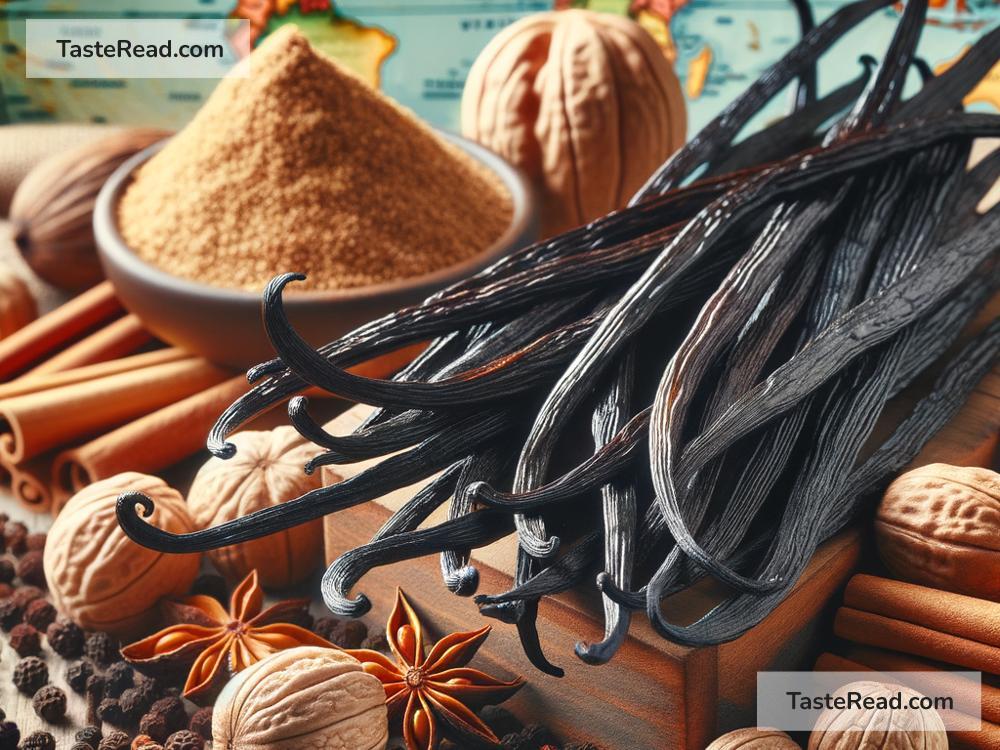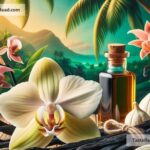The Surprising Journey of Vanilla in the Spice Trade
When you think about vanilla, you might imagine ice cream, cookies, or maybe a scented candle. Vanilla has become so popular that it’s often associated with simplicity and comfort. But behind this humble spice lies an extraordinary journey filled with adventure, intrigue, and innovation.
The Origins of Vanilla
Vanilla comes from the pods of orchids, specifically the species Vanilla planifolia. These delicate flowers are native to tropical regions of modern-day Mexico and Central America. Long before vanilla became a global phenomenon, the Totonacs, an Indigenous people of Mexico, were the first to cultivate and use the plant. They considered vanilla sacred and used it for flavoring food and in rituals.
When the Aztecs conquered the Totonacs in the 1400s, vanilla became a prized possession. The Aztecs combined vanilla with cacao to create a luxurious drink reserved for royalty. This drink, called xocolatl, was the predecessor of modern hot chocolate and one of the first ways vanilla was enjoyed.
The Arrival of Vanilla in Europe
Vanilla’s introduction to Europe came in the early 1500s, after Spanish conquistador Hernán Cortés arrived in Mexico and witnessed the Aztecs’ use of the spice. Cortés returned to Spain with vanilla and cacao, sparking curiosity and excitement among European elites. For a long time, however, vanilla was used almost exclusively alongside chocolate, as part of sweet beverages.
It wasn’t until the 17th century that people began using vanilla as a standalone flavor. By then, its popularity had skyrocketed. Vanilla became a luxury item in Europe, prized for its aroma and versatility in desserts and perfumes. But despite its demand, Europe struggled to cultivate vanilla. The orchid was notoriously tricky to grow, and the plant required specific pollination techniques to produce its pods. For centuries, Mexico remained the sole producer of vanilla.
The Great Pollination Discovery
The breakthrough in vanilla cultivation came in the 19th century, thanks to a young boy named Edmond Albius. Edmond was born into slavery on the French island of Réunion in the Indian Ocean. At just 12 years old, he discovered how to hand-pollinate vanilla orchids—a game-changer for the entire spice industry.
Vanilla orchids are naturally pollinated by a specific species of bee found in Mexico, but this process was impossible outside of their native habitat. Albius learned to replicate the bee’s work manually, using a small stick and his thumb to transfer pollen from one part of the flower to another. This simple yet revolutionary technique allowed vanilla cultivation to expand to regions like Réunion, Madagascar, and Indonesia.
Today, Madagascar is the largest producer of vanilla globally, followed by countries like Indonesia and Uganda. Edmond Albius’s discovery is a testament to human ingenuity and perseverance—and it’s why vanilla could become one of the most widely grown spices in the world.
Why Is Vanilla So Expensive?
Despite its widespread cultivation, vanilla remains one of the most expensive spices. Why? Because growing and processing vanilla is incredibly labor-intensive. Vanilla orchids require meticulous care, and pollination must be done by hand. Once the pods are harvested, they undergo a lengthy curing process to develop their signature flavor. It can take up to a year from pollination to the final product!
Another challenge comes from global demand: vanilla is a staple in cooking, baking, cosmetics, and fragrances. But natural vanilla production simply can’t keep up. Many industries rely on synthetic vanillin, which is chemically produced, to meet the gap in supply. Yet, for those who value true, natural vanilla, the price reflects its rarity and the effort involved in making it.
Vanilla’s Cultural Impact
Vanilla has shaped cultures and cuisines around the world. From Mexico’s use of vanilla in mole sauces to France’s iconic crème brûlée, the spice has an unmatched ability to elevate dishes. Its sweet scent has inspired countless perfumes, and its comforting taste evokes nostalgia for homemade treats.
Interestingly, vanilla’s reputation has evolved. While the term “vanilla” is sometimes used to describe something plain or ordinary, there’s nothing ordinary about its history or journey. Vanilla is a spice born from ancient traditions, nurtured through innovation, and cherished for centuries.
Challenges and Hope for Vanilla Farmers
Today, vanilla farmers face numerous challenges, including climate change, theft, and fluctuating market prices. Vanilla theft has become a serious problem in Madagascar, where some farmers guard their crops day and night. Meanwhile, unpredictable weather can lead to unstable harvests, threatening livelihoods.
Despite these obstacles, programs and organizations are working to support vanilla farmers and make the trade more sustainable. Researchers are exploring ways to reduce crop reliance on hand-pollination, while buyers are increasingly advocating for fair prices and ethical sourcing.
The Sweet Legacy of Vanilla
Vanilla’s journey—from sacred Totonac rituals to European royal courts, and from Edmond Albius’s groundbreaking discovery to your favorite desserts—is nothing short of remarkable. It’s a story of resilience, creativity, and global connection. The next time you enjoy vanilla, whether in a cake or a latte, take a moment to appreciate the spice’s rich history—and the people who made it possible. Vanilla might seem simple, but its past is anything but plain.


